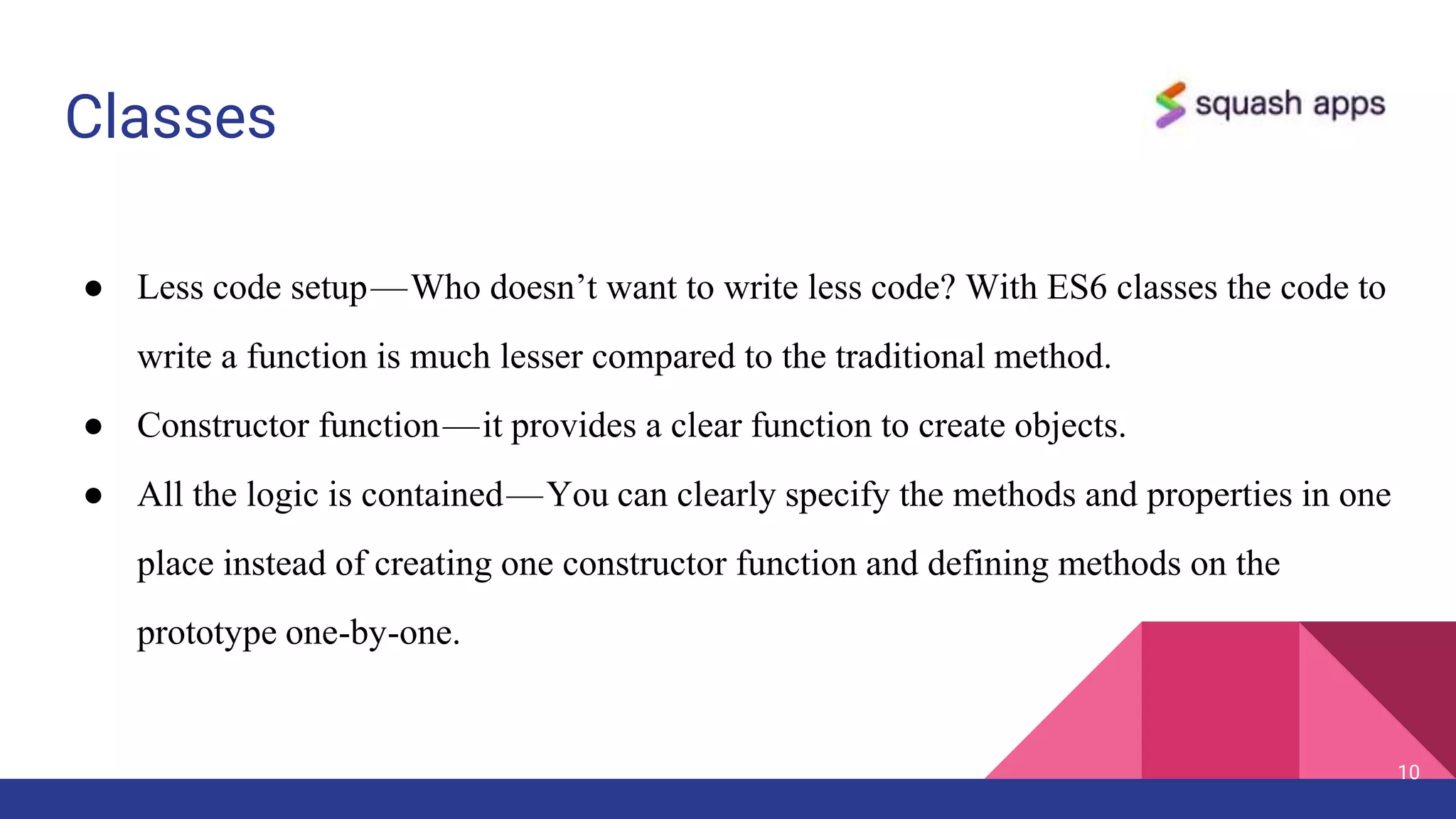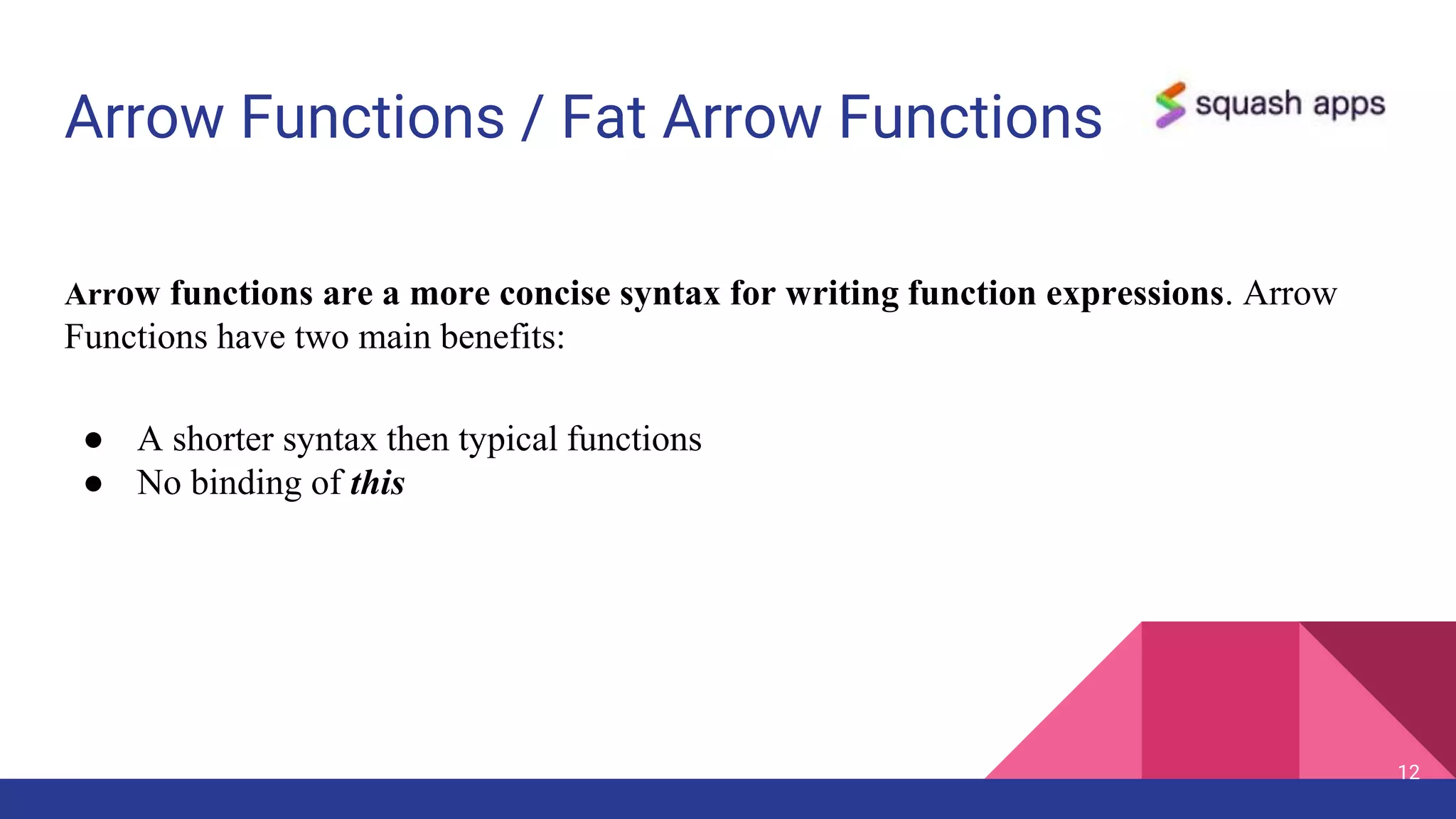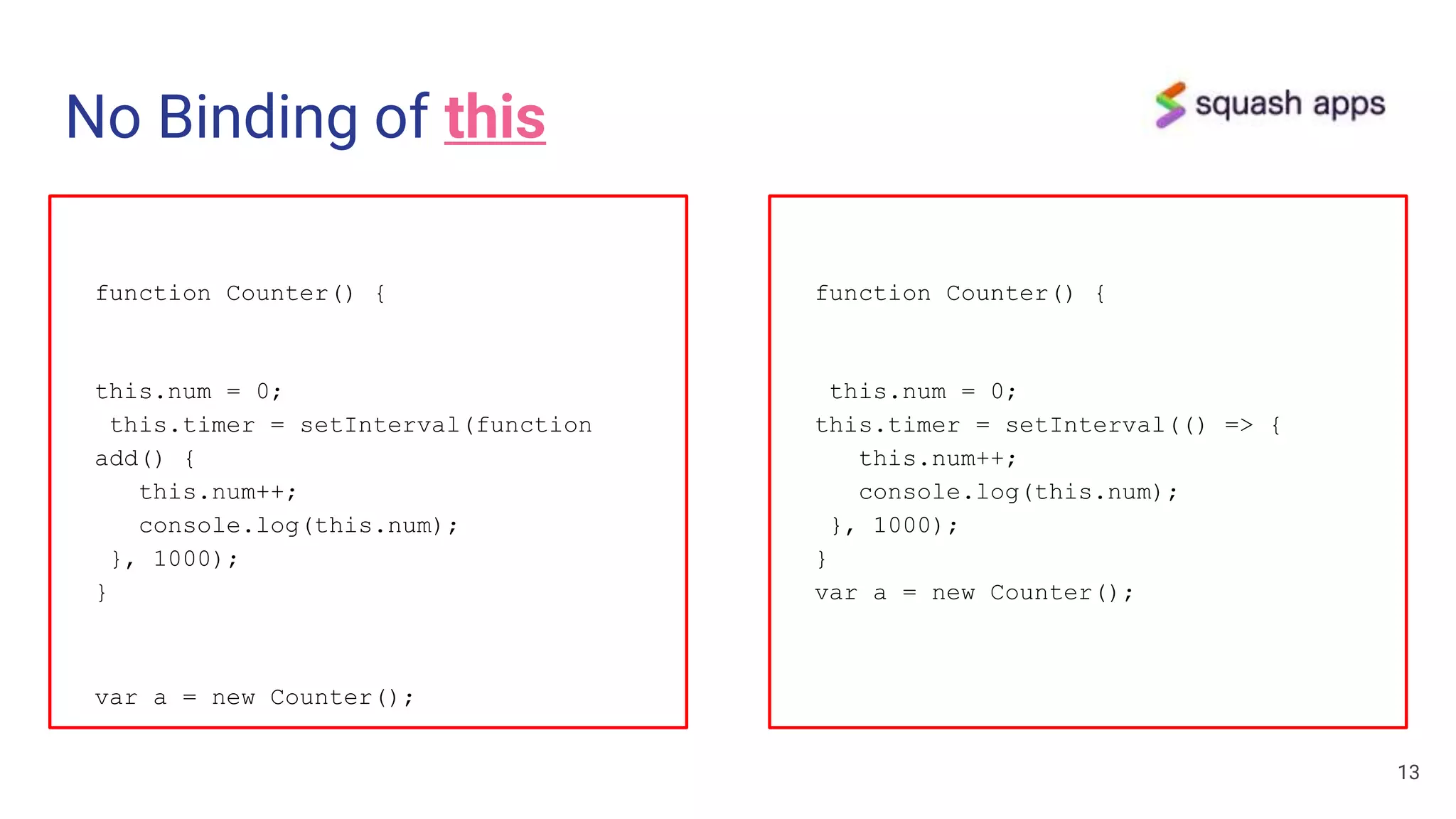The document summarizes key concepts in modern JavaScript including data types, spread and rest operators, destructuring, classes, imports and exports, and arrow functions. It provides examples of using spread syntax to expand iterables and rest parameters to handle indefinite arguments. It also demonstrates array and object destructuring to extract values and assign to variables. Classes are covered as providing clearer syntax over constructor functions. Imports and exports are summarized as supporting named, default, mixed, and handling cyclic dependencies. Arrow functions are described as providing a shorter syntax without binding this.


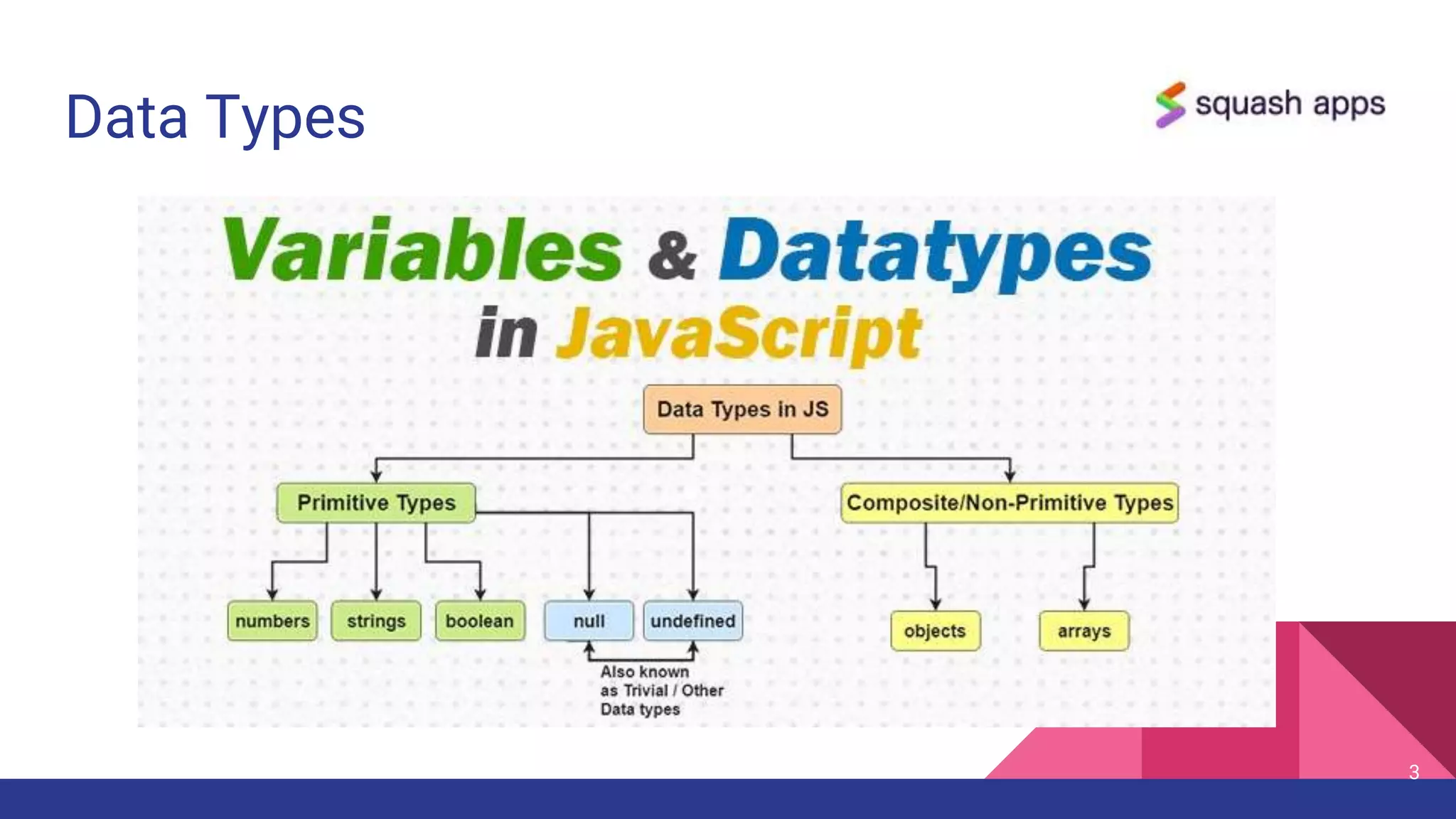

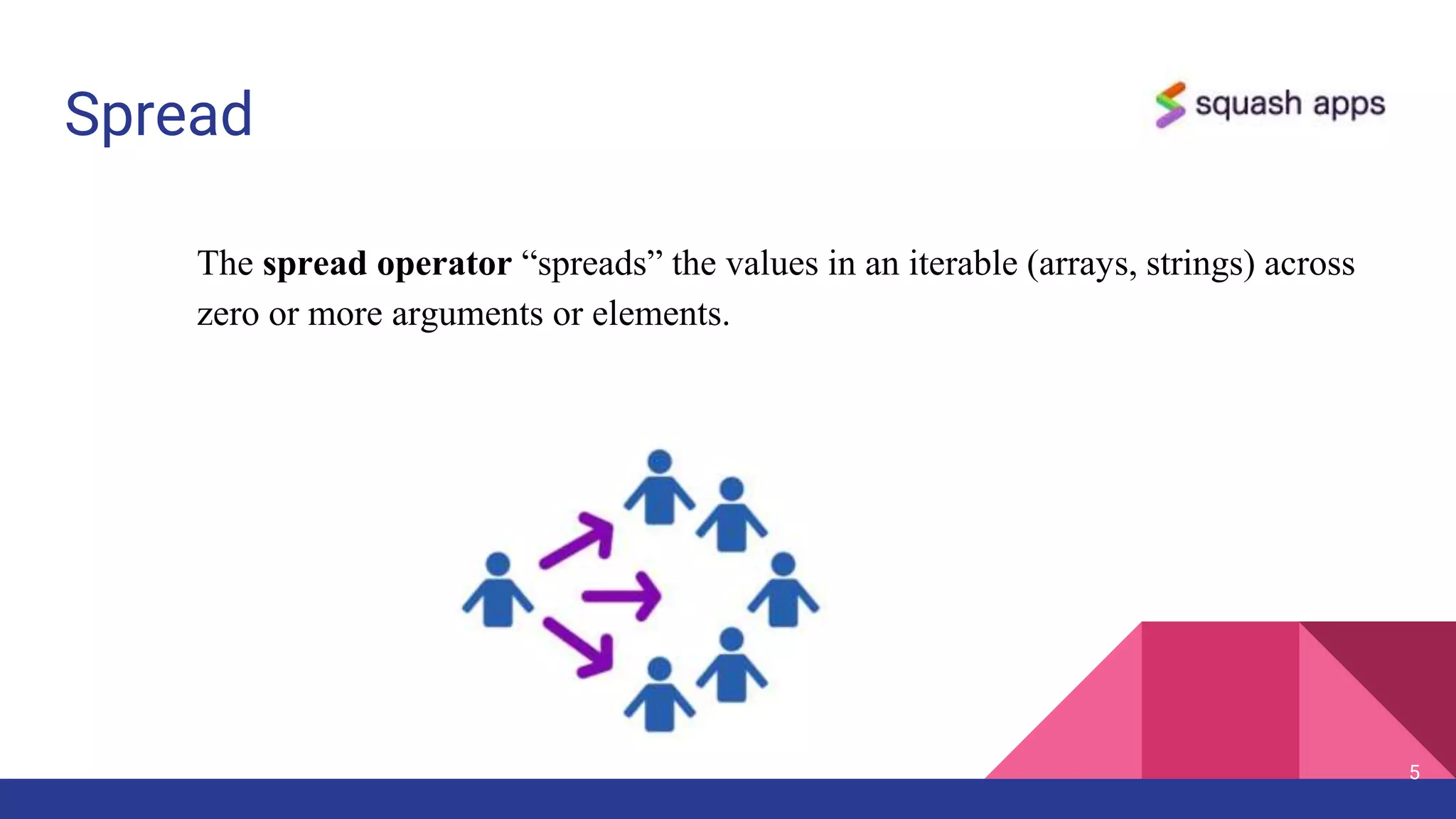

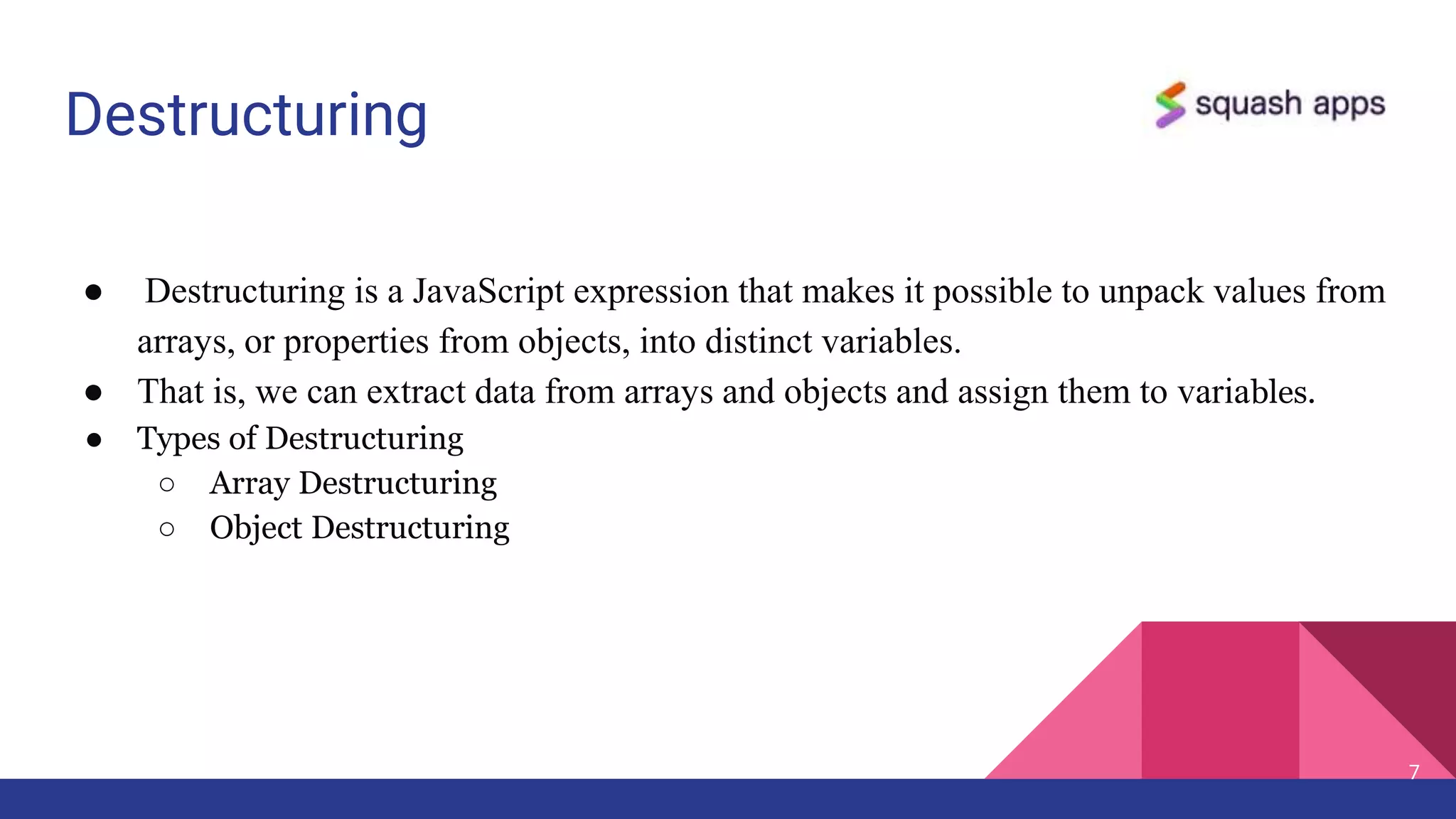
![Array Destructuring - Examples
● const [ name1, name2 ] = [ ‘John’, ‘Peter’, ‘Jack’ ]
● const [ name1, ,name2 ] = [ ‘John’, ‘Peter’, ‘Jack’ ]
● const [ name1, ...names ] = [ ‘John’, ‘Peter’, ‘Jack’ ]
● const [ name1, , , name4= ’Mickel’ ] = [ ‘John’, ‘Peter’, ‘Jack’ ]
● const newArray = [...nameArray, ‘Mike’]
8
Swapping the values
const var1 =1
const var2 = 2
[ var2, var1 ] = [ var1, var2]](https://image.slidesharecdn.com/nextgenerationofjavascript-190629100636/75/Next-Generation-of-Javascript-8-2048.jpg)
![Object Destructuring - Examples
const employee = { name: ‘John’, ‘Age’: 23, Country: [ ‘Sydney’, ’London’ ]}
● const { name, Age = 18 } = employee
● const { Age: empAge } = employee
● const { Country: [country1]} = employee
● const {name, ...otherDetails} = employee
● const newObj = { ...employee }
9
const prop = ‘name’
const {[prop]: firstName} = employee](https://image.slidesharecdn.com/nextgenerationofjavascript-190629100636/75/Next-Generation-of-Javascript-9-2048.jpg)
